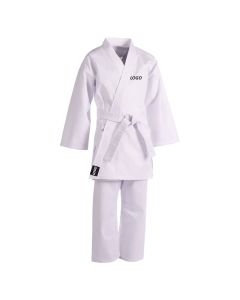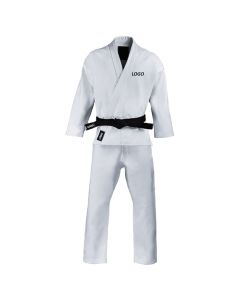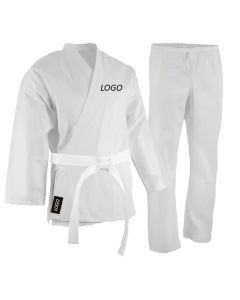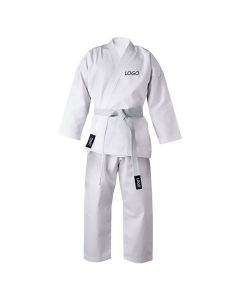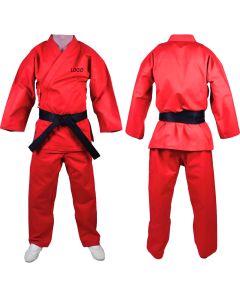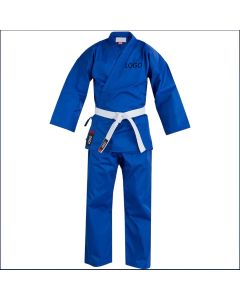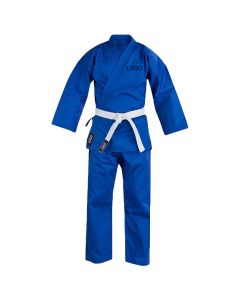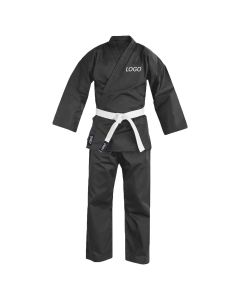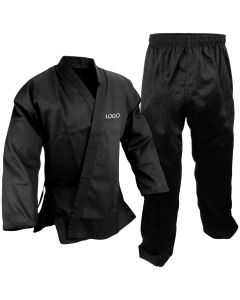Karate, a martial art that originated in Okinawa, Japan, has gained worldwide popularity for its disciplined techniques, striking movements, and deep-rooted philosophy. At the heart of this revered martial art lies the iconic karate uniform, known as the "karategi," which not only serves as a functional garment but also represents the rich traditions, values, and identity of Karate practitioners. In this article, we delve into the significance of karate uniforms, exploring their history, features, cultural importance, and contribution to the practice of Karate.
The Historical Origins of Karate Uniforms
Karate uniforms have their roots in traditional Japanese attire, which influenced the early development of the art on the island of Okinawa. Historically, Karate practitioners did not have a standardized uniform, as training attire varied depending on the instructor and location. However, as Karate spread and gained popularity, the need for a unified and recognizable uniform emerged.
The Elements of a Karate Uniform
A karate uniform typically comprises three essential components:
- Kimono (Gi or Dogi): The kimono, often referred to as the Gi or Dogi, is the most prominent part of the karate uniform. It consists of a lightweight, loose-fitting jacket and pants, which allow for ease of movement during training and sparring. The jacket features wide sleeves that facilitate swift strikes and blocks, while the pants have a flexible waistband that ensures a comfortable and secure fit.
- Obi (Belt): The obi, or belt, is an integral part of the karate uniform, symbolizing a practitioner's rank and progression. The belt is tied around the waist, with different colors denoting different levels of expertise or experience. The progression typically starts with a white belt for beginners and advances through various colors until reaching the coveted black belt. The belt system in Karate represents the practitioner's dedication, growth, and mastery of the art.
- Patches and Embroidery: Karate uniforms may also feature patches, logos, or embroidery that represent the practitioner's affiliation with a specific style, school, or organization. These patches often carry symbolic meaning and create a sense of identity and belonging within the Karate community.
The Significance of Karate Uniforms
Karate uniforms hold deep cultural, symbolic, and functional significance within the practice of Karate. They represent the core values, traditions, and philosophies that underpin the martial art.
- Tradition and Respect: Karate uniforms are rooted in the traditional attire of Japanese martial arts, paying homage to the art's historical origins. By wearing the karategi, practitioners connect to the long-standing legacy of Karate and demonstrate respect for its traditions and the masters who have passed down their knowledge through generations.
- Discipline and Focus: The karate uniform plays a pivotal role in instilling discipline and focus in practitioners. The uniform's design and fit demand proper posture, body control, and mindfulness during training and practice. The karategi serves as a constant reminder of the importance of discipline, concentration, and attention to detail in Karate.
- Equality and Unity: When practitioners don the karate uniform, they enter the training space as equals, regardless of their background, age, or gender. The uniform creates a sense of unity, fostering an environment of respect, camaraderie, and mutual support among practitioners. It promotes the idea that everyone is on an equal footing and encourages collaboration and learning from one another.
- Functionality and Freedom of Movement: The design of the karate uniform prioritizes functionality and freedom of movement. The lightweight fabric and loose fit allow for fluid and dynamic movements, enabling practitioners to execute strikes, kicks, and blocks with precision and agility. The karategi's design enhances the practitioner's performance, allowing them to fully express the techniques and principles of Karate.
Choosing the Right Karate Uniform
Selecting the right karate uniform is crucial for practitioners, as it directly impacts their comfort, performance, and overall experience. Considerations when choosing a karategi include the fabric quality, weight, fit, and style. It is essential to strike a balance between a comfortable fit that allows for freedom of movement and a durable construction that can withstand the demands of training and sparring.
In Conclusion
Karate uniforms embody the spirit, traditions, and values of the martial art. They serve as a visual representation of Karate's rich history and philosophies while providing functionality, comfort, and a sense of identity to practitioners. The karategi not only unifies practitioners but also fosters discipline, respect, and focus within the Karate community. By wearing the karate uniform, practitioners pay homage to the art's traditions, embrace its core principles, and become part of a lineage that stretches back through generations. The karategi is more than a simple garment; it is a symbol of the practitioner's dedication, growth, and connection to the art of Karate.



